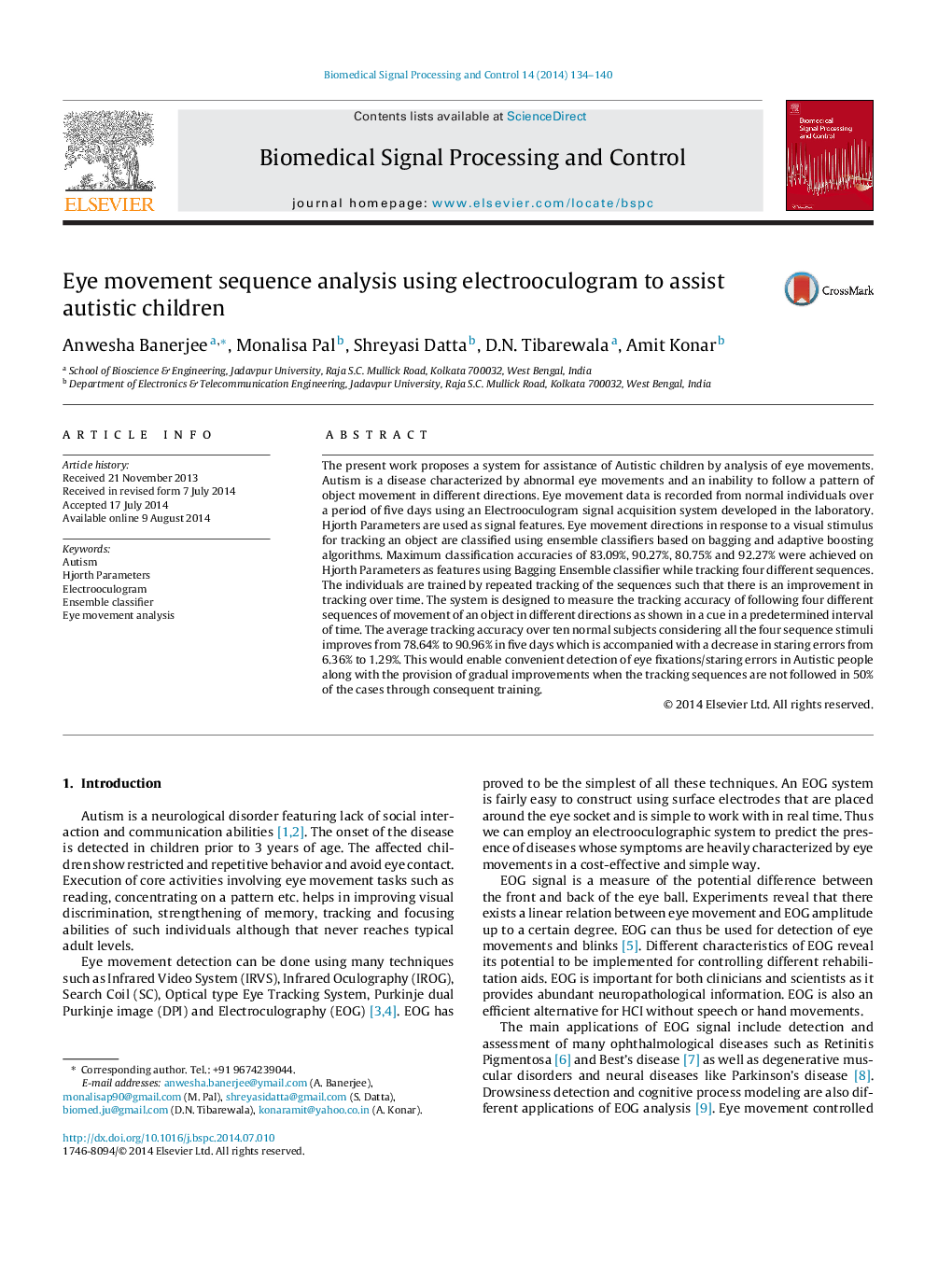| Article ID | Journal | Published Year | Pages | File Type |
|---|---|---|---|---|
| 558011 | Biomedical Signal Processing and Control | 2014 | 7 Pages |
•Simple scheme to assist Autistic people by eye movement analysis via EOG.•Hjorth Parameters as signal features, Bagging & Boosting Ensemble Classifiers used.•Classification accuracies of 83.09%, 90.27%, 80.75% and 92.27% were achieved for 4 sequences.•Mean tracking accuracy rises from 78.64% to 90.96% in 5 days for healthy subjects.•Mean staring errors decrease from 6.36% to 1.29% in 5 days for healthy subjects.
The present work proposes a system for assistance of Autistic children by analysis of eye movements. Autism is a disease characterized by abnormal eye movements and an inability to follow a pattern of object movement in different directions. Eye movement data is recorded from normal individuals over a period of five days using an Electrooculogram signal acquisition system developed in the laboratory. Hjorth Parameters are used as signal features. Eye movement directions in response to a visual stimulus for tracking an object are classified using ensemble classifiers based on bagging and adaptive boosting algorithms. Maximum classification accuracies of 83.09%, 90.27%, 80.75% and 92.27% were achieved on Hjorth Parameters as features using Bagging Ensemble classifier while tracking four different sequences. The individuals are trained by repeated tracking of the sequences such that there is an improvement in tracking over time. The system is designed to measure the tracking accuracy of following four different sequences of movement of an object in different directions as shown in a cue in a predetermined interval of time. The average tracking accuracy over ten normal subjects considering all the four sequence stimuli improves from 78.64% to 90.96% in five days which is accompanied with a decrease in staring errors from 6.36% to 1.29%. This would enable convenient detection of eye fixations/staring errors in Autistic people along with the provision of gradual improvements when the tracking sequences are not followed in 50% of the cases through consequent training.
